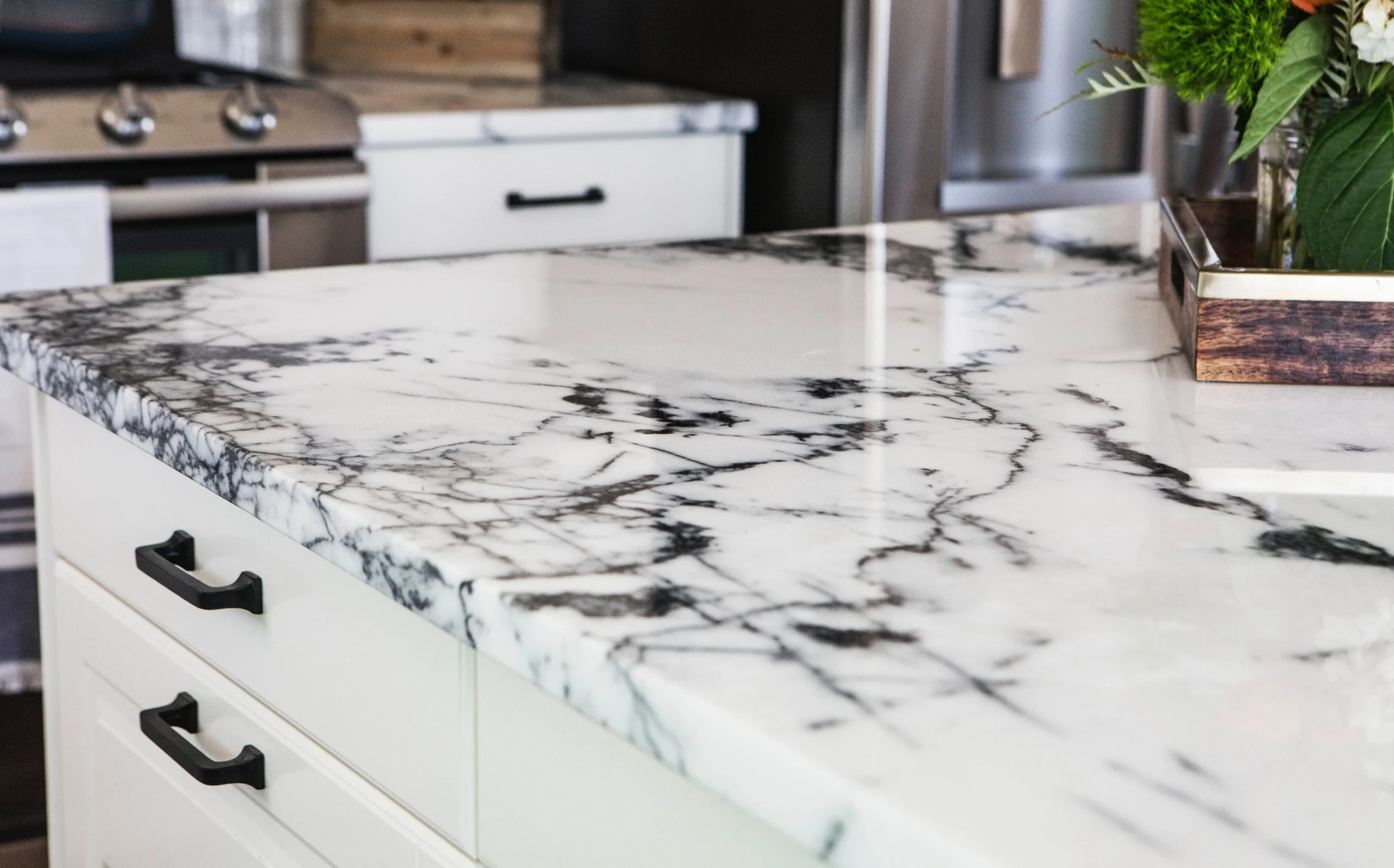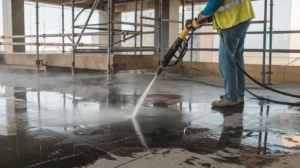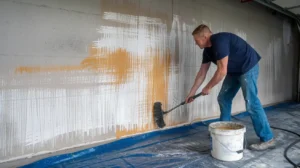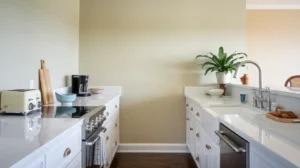How to resurface granite countertops is a critical consideration for homeowners looking to preserve the beauty and functionality of their kitchen or bathroom surfaces. Granite countertops are renowned for their durability, resistance to heat and scratches, and timeless aesthetic appeal.
However, over time, they can develop signs of wear and tear, including minor scratches, dullness, or staining. Proper maintenance and periodic resurfacing are essential to ensure that granite countertops retain their lustre and structural integrity for years to come.
Five Ways For How To Resurface Granite Countertops
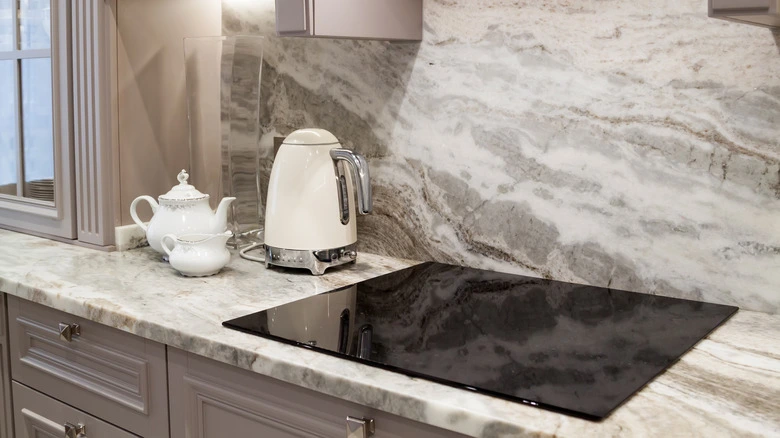
Cleaning and Buffing
- Start by thoroughly cleaning the countertop surface with a granite-safe cleaner and warm water.
- Use a soft cloth or sponge to wipe away any dirt, grime, or stains.
- Buff the surface using a granite polishing compound and a clean, soft cloth to restore its shine and luster.
Using Granite Resurfacing Kits
- Purchase a granite resurfacing kit from a home improvement store, which typically includes everything you need to resurface your countertops.
- Follow the instructions provided with the kit, which may involve applying a bonding agent, spreading a new layer of granite coating, and finishing with a sealant for protection.
Hiring Professional Resurfacing Services
- Consider hiring a professional resurfacing service specializing in granite countertops.
- Research reputable companies in your area and request quotes for the resurfacing job.
- Professionals have the expertise and equipment to effectively resurface your countertops with minimal hassle.
DIY Epoxy Resurfacing
- Purchase an epoxy resin specifically designed for countertops and follow the manufacturer’s instructions for application.
- Clean and prepare the countertop surface thoroughly before applying the epoxy.
- Pour the epoxy mixture onto the countertop and spread it evenly using a roller or brush.
- Allow the epoxy to cure completely according to the manufacturer’s recommendations before using the countertop.
Sanding and Refinishing
- This method is best suited for minor scratches, dullness, or unevenness on the surface of the granite.
- Use fine-grit sandpaper to gently sand away imperfections on the countertop surface.
- Wipe away any dust and debris with a damp cloth.
- Apply a granite sealer or polish to restore the shine and protect the surface.
How to Polish Granite Countertops by Hand
Importance of polishing granite countertops:
Polishing granite countertops not only enhances their aesthetic appeal but also helps maintain their durability and longevity. Over time, granite surfaces can become dull or scratched due to regular use and cleaning.
Polishing restores the natural shine of the stone, making the countertops look like new again. Additionally, proper polishing can help protect the granite from stains and moisture, prolonging its lifespan and maintaining its value.
Materials required for hand polishing:
- Clean microfiber cloths
- Granite polishing compound or powder
- Diamond hand pads (grit levels: coarse, medium, fine)
- Water
Optional: Masking tape (to protect surrounding surfaces)
Step-by-step guide for hand polishing granite countertops:
Clean the countertop: Start by wiping down the granite countertop with a clean, damp microfiber cloth to remove any dirt, debris, or residue.
Protect surrounding surfaces (optional): If desired, use masking tape to cover adjacent surfaces such as cabinets or walls to prevent accidental damage during the polishing process.
Apply polishing compound: Sprinkle a small amount of granite polishing compound or powder onto the surface of the countertop. Alternatively, you can mix the polishing compound with water to form a paste-like consistency.
Begin polishing: Starting from one corner of the countertop, use a coarse diamond hand pad to gently rub the polishing compound into the granite in circular motions. Apply moderate pressure and ensure even coverage across the entire surface.
Progress to finer grits: After completing the coarse polishing, switch to a medium grit diamond hand pad and repeat the polishing process. Continue with progressively finer grits (medium to fine) until you achieve the desired level of shine and smoothness on the granite surface.
Rinse and wipe: Periodically rinse the countertop with water to remove any excess polishing compound or debris. Use a clean microfiber cloth to wipe the surface dry and inspect for any remaining dull spots or imperfections.
Touch up if necessary: If certain areas still appear dull or scratched, repeat the polishing process with the appropriate grit diamond hand pad until the desired finish is achieved.
Final polish: Once satisfied with the overall appearance of the countertop, use a clean microfiber cloth to apply a final polish, buffing the surface in circular motions to enhance the shine and remove any remaining residue.
Tips for achieving a professional finish:
- Work in small sections to ensure thorough coverage and consistent results.
- Use gentle pressure and avoid applying excessive force, as this can damage the granite.
- Keep the surface moist by periodically spraying water during the polishing process.
- Regular maintenance and sealing of granite countertops can help preserve their shine and prevent future damage.
- If you encounter stubborn stains or deep scratches, consider seeking professional help for restoration or repair.
Cost to Resurface Granite Countertops
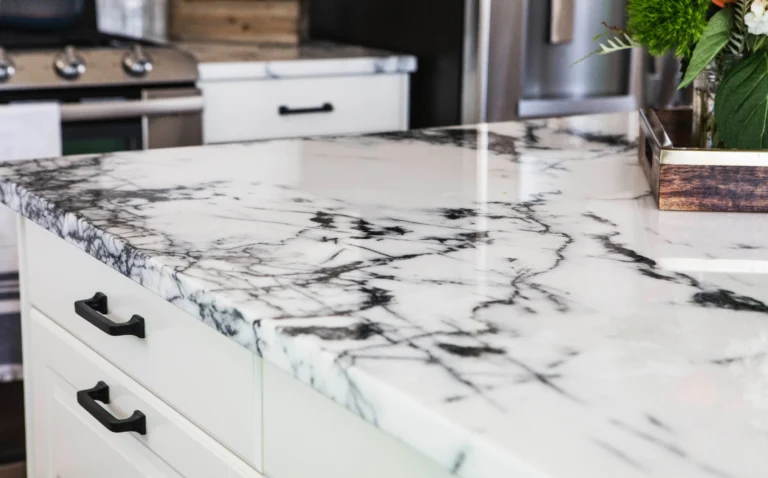
Factors influencing the cost of resurfacing:
Size of the Countertop: Larger countertops will naturally cost more to resurface compared to smaller ones due to the increased amount of materials and labor required.
Material Quality: The quality and type of materials used for resurfacing will affect the overall cost. Higher quality materials may come at a premium price.
Current Condition: The extent of damage or wear on the existing countertop will impact the cost. Minor scratches or stains may require less extensive work compared to deep scratches or chipping.
Resurfacing Method: Different resurfacing methods have varying costs associated with them. Some methods may require more labor or specialized equipment, which can affect the overall price.
Location: Costs can vary depending on your geographical location and the availability of skilled professionals in your area.
Additional Customizations: Any additional features or customizations, such as edge profiles or unique finishes, will add to the overall cost.
Average cost estimates for different resurfacing methods:
Professional Refinishing: On average, professional countertop refinishing can cost between $50 to $100 per square foot.
DIY Kits: DIY resurfacing kits are more budget-friendly, typically ranging from $200 to $500 for a standard kit. However, costs may vary depending on the brand and quality of the kit.
Epoxy Coating: Epoxy coating is another option, with prices averaging between $3 to $10 per square foot, depending on the complexity of the job and the type of epoxy used.
Additional costs to consider:
Labor Costs: If you hire professionals for the job, labor costs will be an additional expense. If you want professional guidance or services then Stone Sealer Restoration is best in business.
Sealant or Finish: Depending on the resurfacing method chosen, you may need to apply a sealant or finish, which will add to the overall cost.
Repairs: If there are any underlying issues with the countertop that need to be addressed before resurfacing, such as structural damage, repairs will incur additional costs.
Removal and Disposal: If you’re replacing the countertop entirely, you’ll need to consider the cost of removing the old countertop and disposing of it properly.
Tips for budgeting and cost-saving measures:
Get Multiple Quotes: Obtain quotes from several contractors or suppliers to compare prices and ensure you’re getting a competitive rate.
Consider DIY Options: If you’re handy and have the time, opting for a DIY resurfacing kit can save you money on labor costs.
Maintain Regularly: Proper maintenance of your countertops can help prolong their lifespan and reduce the need for costly repairs or resurfacing in the future.
Explore Financing Options: Some contractors may offer financing options or payment plans to help spread out the cost of resurfacing over time.
Prioritize: If you’re on a tight budget, prioritize the areas of the countertop that need the most attention to minimize costs.
Conclusion
Regular maintenance and resurfacing are essential practices for maintaining the longevity and aesthetic appeal of granite countertops. Over time, these surfaces can become dull, scratched, or stained due to daily use and exposure to various substances.
By implementing a consistent maintenance routine, including cleaning with appropriate products and sealing periodically, homeowners can preserve the beauty and functionality of their granite countertops. Feel free to contact us for any type of services or query like how to resurface granite countertops.
FAQs
What Is Resurfacing, And Why Is It Necessary For Granite Countertops?
Resurfacing involves refinishing the surface of granite countertops to restore their original shine and smoothness. It’s necessary to address scratches, stains, or dullness that may develop over time due to regular use and exposure to various substances.
Can I Resurface My Granite Countertops Myself, Or Do I Need To Hire A Professional?
While some homeowners may attempt DIY resurfacing using commercial kits, it’s generally recommended to hire a professional for best results. Professionals have the expertise, equipment, and products needed to effectively resurface granite without causing damage.
How often should I resurface my granite countertops?
The frequency of resurfacing depends on factors such as usage, care, and the condition of the countertops. Generally, it’s advisable to consider resurfacing every few years or as needed when the surface starts showing signs of wear and tear.
What Are The Steps Involved In Resurfacing Granite Countertops?
Resurfacing typically involves cleaning the surface thoroughly, repairing any visible damage, honing or grinding the surface to remove scratches and stains, and finally polishing and sealing the countertop to restore its shine and protect it from future damage.
Will Resurfacing Completely Remove Deep Scratches Or Stains From My Granite Countertops?
Resurfacing can significantly improve the appearance of granite countertops and minimize the visibility of scratches and stains. However, deep scratches or stubborn stains may require additional treatment or may not be fully eliminated through resurfacing alone.
How Long Does The Resurfacing Process Take?
The duration of the resurfacing process varies depending on factors such as the size of the countertop, the extent of damage, and the specific techniques used by the professional. Generally, it can take anywhere from a few hours to a day or more to complete the process.

